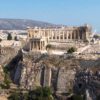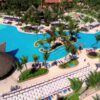Vessa Chios Medieval
Vessa Chios Medieval
Vessa Chios Medieval mastic village.VESSA CHIOS (Medieval mastic village) - Βέσσα ΧΙΟΣ (documentary)Vessa, Greece/ "VESSA - Medieval village - South Chios (Documentary) - Η Μεσαιωνική ΒΕΣΣΑ στη Χίο. Shot & Edited by: Yiannis Zafeiris, Music: "Inside" by: Stefano Mocini. Directed, Shot & Edited by: Yiannis Zafeiris (2015) Assistant Director: Ioana Balaska Music: "Inside" by: Stefano Mocini. Director of Photography: Vasilis Pahoundakis Technical Support: Ilias Kletsas/Roinides (AlphaFilmworks) Copyediting: Ifigeneia Sotiraki Unit Production Manager: Ioana Balaska Production Assistants: Yiannis & Stavros Athanasiou. The mastic trees and their priceless resin, mastiha, have become the main occupation of the residents of Southern Chios for many centuries. These trees can thrive in no other part of the world, but in Southern Chios and whomever had the luck or has chosen to live next to them, could do nothing else but appreciate the nature’s generosity and take full advantage of it. The renowned mastiha-castle villages constitute a study of the fortification architecture, which was created by Genovese after the re-occupation of the island, in the 14th century.All these are works of an admirable defensive planning and communication net since the era when Giustiniani took over the exploitation of the island and, first of all, took care of the cultivation of mastiha and its cultivators. They built castle villages, unseen and away from the sea, and they used the external walls of the houses as the fortification wall which would protect the villages; labyrinth-like villages, with houses closely built, so that the people could walk from one flat roof to the next; All the houses were around a very tall tower and neighbourhoods were created as containment zones of various invaders' advances. Vessa is 20 kms away from the town of Chios, at the southern part of the island. It is a small village, but also a typical example of how medieval castle villages looked like. Vessa was created by the integration of three smaller settlements. It’s a semi-mountainous village, which extends in a big valley surrounded by mountains. The gate of the village is well preserved. The houses are closely built, one next to the other and there are narrow lanes. Its tall buildings remind us of towers. Although the fortification wall surrounding the village is broken in some parts, the architecture and the village’s planning have remained almost intact throughout the years, especially the corner towers of the castle and parts of its fortification wall. Vessa is a stone-built village on its whole, with many restored houses. The architecture of its houses remains intact and worth admiring. The central tower is situated in the village’s picturesque square, almost untouched by time. The churches of the village is "Panayia", "Ayios Dimitrios" and "Panayia Petrousena", the oldest church of Chios, as the residents of the village claim. Vessa is the birth place of Konstantinos Valiadis (Konstantinos E’) Ecumenical Patriarch from 1897 until 1901.


